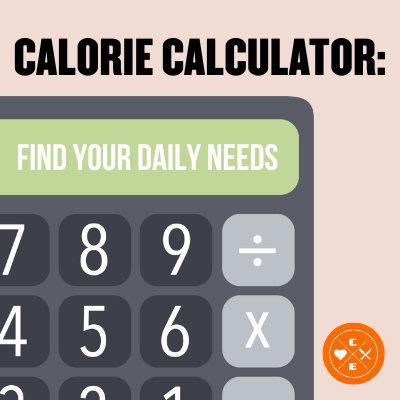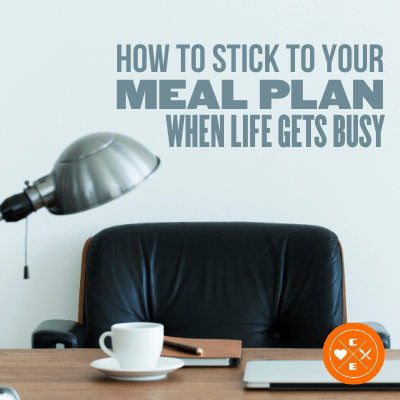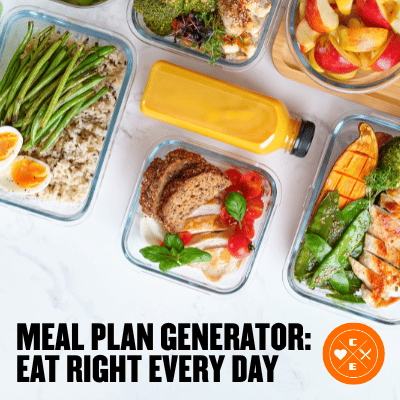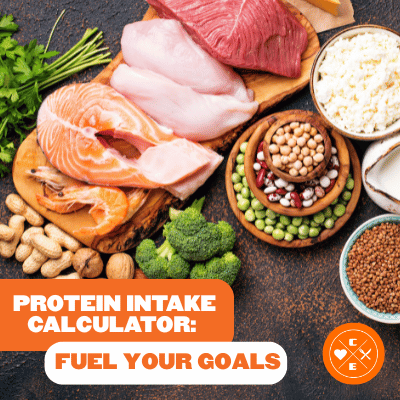Calorie Calculator: Find Your Daily Needs
How to use this page: Enter your details in the calculator above to get an estimate of your maintenance calories. Then choose a goal (lose, maintain, or gain), pick a macro preset, and use the sample meals below to turn numbers into easy plates you’ll actually eat.
How to Read Your Results
- Maintenance calories = your estimate to keep weight steady.
- For weight loss: start with a small deficit (≈250–500 kcal/day). Smaller is easier to sustain; adjust after 10–14 days based on progress.
- For muscle gain: use a modest surplus (≈250–300 kcal/day) paired with strength training 2–4x/week.
- Protein target: many people do well at roughly 0.7–1.0 g per lb of goal body weight (or 1.6–2.2 g/kg). Adjust to appetite and training.
New to timelines? See How Long Does It Take to Notice Weight Loss?
Choosing the Right Activity Level
- Sedentary: desk job, minimal intentional exercise.
- Light: 1–3 short workouts/week or a job with some standing.
- Moderate: 3–5 workouts/week (mix of lifting/cardio).
- Very active: 6–7 hard sessions/week or a physical job.
- Extra: physical job plus regular training (athletes, trades with long days).
Tip: If you’re between two, pick the lower one first. It’s easier to add calories later than to chase a too-high estimate.
Set a Smart Goal (Deficit or Surplus)
Weight loss starting points
- Conservative: maintenance − 250 kcal/day (slower, easier adherence)
- Standard: maintenance − 500 kcal/day (classic 1 lb/week estimate, varies by person)
Muscle gain starting points
- Lean bulk: maintenance + 250–300 kcal/day with progressive strength training
Prefer guidance on carbs? Read Carbs & Weight Loss: How to Make Them Work.
Macro Presets (Grams) for Popular Calorie Targets
Pick the style you’ll stick with. All presets include plenty of veggies and lean proteins. Adjust ±5–10% to taste and performance.
| Calories | Balanced 30% P / 40% C / 30% F | Higher-Protein 35% P / 35% C / 30% F | Lower-Fat, Carb-Friendly 30% P / 45% C / 25% F |
|---|---|---|---|
| 1,600 | Protein 120 g · Carbs 160 g · Fat 53 g | Protein 140 g · Carbs 140 g · Fat 53 g | Protein 120 g · Carbs 180 g · Fat 44 g |
| 1,800 | Protein 135 g · Carbs 180 g · Fat 60 g | Protein 158 g · Carbs 158 g · Fat 60 g | Protein 135 g · Carbs 203 g · Fat 50 g |
| 2,000 | Protein 150 g · Carbs 200 g · Fat 67 g | Protein 175 g · Carbs 175 g · Fat 67 g | Protein 150 g · Carbs 225 g · Fat 56 g |
| 2,200 | Protein 165 g · Carbs 220 g · Fat 73 g | Protein 193 g · Carbs 193 g · Fat 73 g | Protein 165 g · Carbs 248 g · Fat 61 g |
| 2,500 | Protein 188 g · Carbs 250 g · Fat 83 g | Protein 219 g · Carbs 219 g · Fat 83 g | Protein 188 g · Carbs 281 g · Fat 69 g |
Prefer food, not math? Our Weight-Loss Meal Plan and Build-a-Meal Plan hit protein targets without the spreadsheet.
Plate Templates & Sample Days
Plate formula: 4–6 oz lean protein + 1–2 cups vegetables + ½–1 cup smart carbs (rice, potatoes, beans, whole grains) + 1–2 tsp added fats.
- Breakfast: Greek yogurt bowl with berries & measured granola (oats or Overnight Oats), or eggs + toast + fruit.
- Lunch: Salmon/rice/veg bowl (salmon tips) or tuna salad on whole-grain (tuna guide).
- Dinner: Chicken + roasted sweet potatoes + greens (sweet potato portions) or shrimp stir-fry (shrimp guide).
- Snacks: Cottage cheese/fruit (why it works), measured PB + apple (PB portions), or a protein bar.
Want done-for-you balance? Stock our High-Protein Box and sprinkle in simple sides like rice or beans.
Troubleshooting Stalls (10-Day Check)
- Log honestly for 7–10 days (weekends too). Measure oils, dressings, nut butters.
- Average your scale weight across those days (daily weights → 7–10 day average).
- Adjust one dial: reduce portions by ~100–200 kcal/day or add 2–3k steps/day. Re-check in 10–14 days.
- Keep protein & strength training steady to preserve muscle and shape.
Related Reading
- Carbs & Weight Loss: Make Them Work
- Juicing vs Blending
- How Long to Notice Weight Loss?
- Is Oatmeal Good for Weight Loss?
FAQs
How accurate is a calorie calculator?
It’s an estimate—great for a starting point. Your real needs depend on muscle mass, daily movement, and consistency. Track for 10–14 days and adjust.
How big should my calorie deficit be?
Start small (≈250–500 kcal/day). Smaller deficits are easier to sustain and preserve performance. Adjust based on 10–14 day averages.
Do I need to count macros or just calories?
Calories drive weight change; macros improve fullness and performance. Many people feel best with a protein target and simple plate formula.
How often should I recalculate?
Re-check every 8–12 weeks, or whenever your weight/activity changes notably.
Can I lose fat without doing cardio?
Yes—fat loss is a calorie balance. That said, steps and cardio help health and allow a slightly higher food intake. Strength training helps protect muscle.
Disclaimer: This page is for general information only and isn’t medical advice. If you’re pregnant, postpartum, managing a medical condition, or taking medications that affect appetite or fluid balance, work with your clinician.




